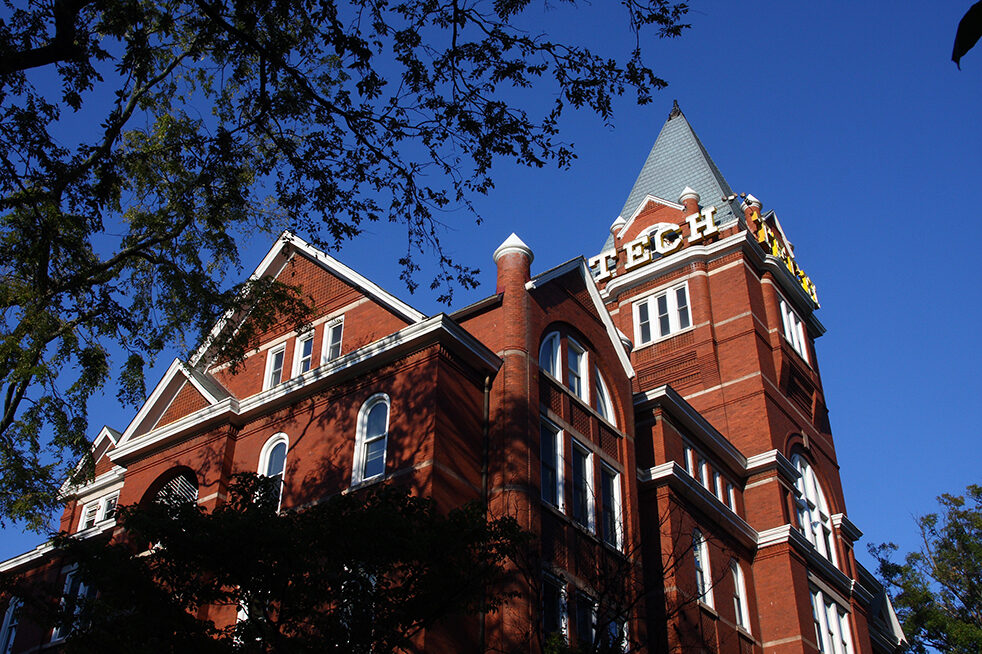Near the beginning of the day and in between class periods one can see the flurry of many students marching toward their destinations in large groups.
Those on bikes, scooters and skateboards weave between the traffic and sometimes you will see those dropped off by a car near the side of the road. Yet, the bus system, which should take students to and from their dorms and classrooms, seem to nearly always be half-empty.
While public transportation is a must for those who may not be able to afford the time or resources to travel by other means, the current bus system is certainly lacking when it comes to Tech. But why is this the case, and how can it be improved for later Jackets?
When new guests to Tech arrive on campus after they finish their guided tours of the sights, they may wish to explore on their own the various buildings we make available to our students.
An electronic bus route station, like the one provided in the John Lewis Student Center, may be of use to them in order to find a bus to take. However, they will quickly find that the station has been out of commission for the better part of this semester.
No worries then, there is an online Stinger bus app for them to use, which also lets you track where the bus is currently located. The app itself is also a frustrating piece of software, with no notices on whether the bus is making a regular stop at a pickup point, or maybe taking a mandatory break at a station, which can last around 5-7 minutes.
It can also be quite frustrating to see when a bus is approaching your station, only to see it suddenly veer off from the dedicated route for unknown reasons, the tracker on the bus still left on as if it were still in service.
The current system at Tech reflects the same sort of scene as on the national scale, where ridership has dropped nearly 13% over the last decade. This transit death spiral, as some would call it, involves routes becoming less reliable and commute times becoming longer due to lower ridership. Thus, further service cuts are made to compensate in a never-ending cycle. While the situation at Tech is not as bleak, the microcosm of the American mass transit problem can also be seen on campus, that problem being the automobile.
Cars are almost an essential part of life in the U.S., but many students may not be able to afford such a luxury, as well as the needed parking permit. Cars also serve as a nuisance in their incessant need for more space dedicated toward parking, and with Tech located in a major city, this does not come cheaply. Currently, alternatives to walking, cars and the bus system include the many rentable e-scooters and e-bikes littered about campus, which many would note as a nuisance due to the nature of how they are strewn about on the sidewalks.
The combination of difficulty in using the bus system as well as a lack of interest in expanding it serves as a catalyst for lower bus ridership. Needless to say, these frustrating aspects of the bus system can put people off from using them, but there are ways to correct this situation.
Back in 2012, a system was developed to reduce bus bunching, which is when one bus picks up the passengers at a station and the next bus immediately following serves an empty station. This system was based on Markov chains, a set of random events that affect one another in a predictable pattern.
The algorithm using Markov chains did help in reducing redundant bus arrivals and could be further improved to correct current issues.
More information should be presented to the user when using the bus app, and more electronic terminals should be set up in buildings to give students a timetable of arrivals. For buses, it also mostly comes down to tweaking the systems already in place, such as hiring more drivers, buying more vehicles and improving routes.
If the funds dedicated to new parking spaces on campus went to improving the bus system and including more forms of non-car transit, it would go a longway to improving the Tech transit system and also the environmental footprint as a bonus.
Only time will tell if the way the buses run now will improve for the students of tomorrow.
